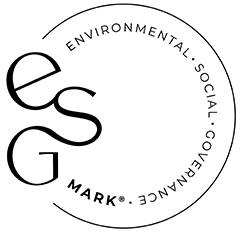Our monthly round-up of the latest VAT news.
Sporting facilities supplied by local authorities
Following several Tribunals (including one taken by Chelmsford Council), HMRC has now agreed that the provision of sporting facilities by a local authority is a “non-business” activity.
Due to the special status allocated (but not limited) to local authorities, this means that while no VAT is due on the admission charges, VAT in the costs of providing the leisure facilities (including construction) can be reclaimed.
Option to tax disapplied or not?
This case refers to the application of anti-avoidance legislation. As such it’s complex and not necessarily intuitive.
The taxpayer bought some property which had been opted to tax. So the taxpayer also opted to tax the property and then leased it to an associate business.
Following a VAT visit, HMRC ruled that the taxpayer’s option was disapplied as the associate business was not able to recover all their input tax (i.e., was significantly partially exempt).
Several years later the taxpayer sold the property to a third party (with the associate remaining as tenant) and did not charge VAT as the option had been disapplied. But at this point there was a catch-22 when looking at the law.
The regulations regarding the disapplication of an option to tax requires that the seller is disposing of a capital item for the purposes of the Capital Goods Scheme – that is a property costing over £250,000 and bearing a positive rate of VAT.
If the seller intended to charge VAT then the seller was a developer and the property was a capital item – the disapplication applied and no VAT was due, but if the seller did not intend to charge VAT then they were not a developer the disapplication fell away and VAT would be due.
The Supreme Court took HMRC’s view that the disapplication did not apply, and that VAT was due on the sale of the property to the third party.
As seems to be the case with anti-avoidance regulations the objective of stopping a planning arrangement often results in legislation that is sometimes clumsy and, as shown here can lead to an illogical conclusion. A more detailed view of this case and anti-avoidance in land and property deals will be available in the next edition of Rickard Luckin’s Construction Land and Property newsletter at the end of the month.
One supply two rates: allocation of VAT
HMRC has released another of their rather ominously entitled Guidance for Compliance bulletins, this time on the “best” methods to allocate consideration when there’s one sale but the supply is of goods and/or services at different VAT rates.
HMRC rightly points out that the law requires apportionment but does not set out how to do this.
I may be paranoid, but the first example given is the sale of a “meal deal” sale of a cold takeaway sandwich, a soft drink and a cookie. Just the kind of purchase you could make at a Subway franchise which HMRC seems to be targeting, with some success, regarding their standard: zero rated sales ratios.
Apportionment using the sale price or cost of individual elements of a composite supply are the suggested “fair and reasonable” methods.
Given HMRC’s success in the takeaway sector could the fact that there is now guidance in the public domain lead them to suggest higher penalties for future assessments?
Supplies within education?
The VAT treatment of education not only relies on what is being supplied but also the status of the supplier. A further and higher education College operated a restaurant, hair and beauty salons and a performing arts centre where students could learn their vocational skills. As such the College looked to exempt the income of all these operations, as supplies closely related to exempt supplies of education. HMRC disagreed, the principle in the VAT directive was that if the basic purpose of the supplies are to generate additional income then the supplies are standard rated.
The Tribunal agreed (as per other decisions) that the restaurant was not primarily to generate income, the prices charged for the meals was not representative of commercial operation, however for the salons and arts centre the Tribunal, for lack of evidence, couldn’t make the same decision.
The third element of the case was whether the supply to grant funded students was a non-business rather than exempt activity. Being non-business can, for certain entities result in VAT recovery. Such entities include academies and local authority run colleges, so this is of interest. However, as that issue is being heard at the Court of Appeal soon, the Tribunal suggested that the parties stay their appeal pending the outcome of the other case.
Tax point: when is the VAT due?
A business was a member of a VAT group supplying financial management services to another member of the same group. The contract allowed for further payments should certain value criteria be met. When those criteria were met the supplier was no longer in the VAT group. The recipient business said that the fee for the “bonus” was not subject to VAT as it related to services provided when the two companies were within the same VAT group.
It was agreed that the services provided were those of a “continuous supply” nature. Under the relevant legislation this meant that a tax point was created whenever the invoice was raised or payment made (the earlier of the two). However, the First Tier Tribunal agreed with the taxpayer reasoning that the time of supply rules were subject to the VAT group rules. The case went to Upper Tribunal and HMRC has won this time. The UTT said that the answer lay in the legislation and that the continuous supply of services rules for time of supply were the determining factor not the time the services were supplied. As the success fee was £9.3m net this may not be the end of the matter.
Principal or agent?
This has always been an area of contention. Where an agent acts in a certain way they are seen as a principal for VAT – that is the VAT is due on the total fees received not the commission element retained by the “agent”. Last year there was, due to the amounts involved, the headline grabbing situation regarding Uber. Another case has gone to the European Courts, due to the timing of the initial case being heard.
This relates to a website called “only fans” were content creators upload content for site visitors to consume for a fee. It’s mainly an adult website but apparently the most common videos are of feet (try researching that on the office PC). The website operator retained 20% of the fees and it was that 20% that they declared VAT on. However, payments went through the website operator with regulations in place that specifically addresses the issue of digital services, and that the agent is the principal. It was no real surprise then that the taxpayer lost but given the amount of VAT at stake neither was the taxpayer’s wish to challenge.
VAT penalties for being reckless?
A company sold cars from the UK to the Republic of Ireland and treated them as zero-rated dispatches (this was while the UK was part of the single market). However, the seller did not have sufficient evidence to show that the goods were dispatched. The seller had been assessed for this before and HMRC had set out to them the requirements for the documents. On this basis the new assessment had a penalty on the “deliberate” scale.
The seller said that they could only be deliberate in their actions if the documentation was known to be incorrect and nothing was done to rectify this. The fact that the documentation was absent couldn’t be deliberate. But HMRC had not brought the argument that reckless was equivalent to deliberate. As such the Tribunal agreed with the seller that the penalties were at most careless.
Penalty floored
HMRC had issued a Personal Liability Notice (PLN) for the director of a flooring (did you see what I did there?) company for dishonesty. The business had failed to submit VAT returns for several years but had paid central assessments issued by HMRC which were substantially lower than the true liability for the VAT periods. The taxpayer said that he had not deliberately withheld submitting the VAT returns and that his actions were extremely careless or even reckless, but that did not equate to dishonesty. The Tribunal agreed with him and cancelled the PLN.
The two cases show that HMRC is keen to ascribe a level of behaviour to a taxpayer that results in higher penalties or PLNs, but that the Tribunals take seriously the requirements for HMRC to prove that their assessment are accurate and legal.
Happy Birthday VAT
1 April 2023 saw the 50th anniversary of the introduction of VAT in the UK. In 1973, the then Chancellor (Anthony Barber) said it was a “simple tax”. The original standard rate was 10%. Since then, there have been numerous changes to the standard rate, the introduction of reduced rates and, briefly, a “super rate” for items deemed then to be luxuries, like fresh tomatoes are now (but these are, of course, zero-rated).
Despite threats to abolish it (a central plank of Mr Gove’s manifesto to become Conservative leader), it seems that VAT will be with us for many years yet. It raised over £150bn for the Treasury in the 2020/21 year. Of course, any right-thinking VAT party should have specially selected snacks to see if people can distinguish from the standard rated (potato crisps) and zero-rated (giant marshmallows – for now).
The future seems focused on how technology can assist the taxpayer and HMRC in identifying the “right tax at the right time”. VAT was a trailblazer for Making Tax Digital, but it seems HMRC’s response to the digitisation of forms is to withdraw from being approachable or even available. Whilst several cloud computer software systems allow for the taxpayer (or their agent) to capture and assign transactions swiftly (and at times automatically), it still relies on the original posting to be correct, so GIGO (garbage in, garbage out) is now more applicable than PICNIC (problem in chair, not in computer).
2024 seems to be the year when e-invoicing will become obligatory in several EU member states. At the extreme of capturing real time information is Italy, where not only are electronic invoices obligatory, but they also must be sent via the Italian VAT authorities. Such is the data now held that these authorities are talking of experimenting in them calculating VAT returns for more “straightforward” VAT registrations.
If you would like to discuss any of these VAT updates in more detail please contact
Ian Marrow.
This article is from the latest issue of our VAT newsletter. To receive future copies of any of our newsletters directly to your inbox, please
register your interest via our preference centre.
If you have any questions about the above, or would like more information specific to your circumstances, please enter your email address below and we will get in touch:













